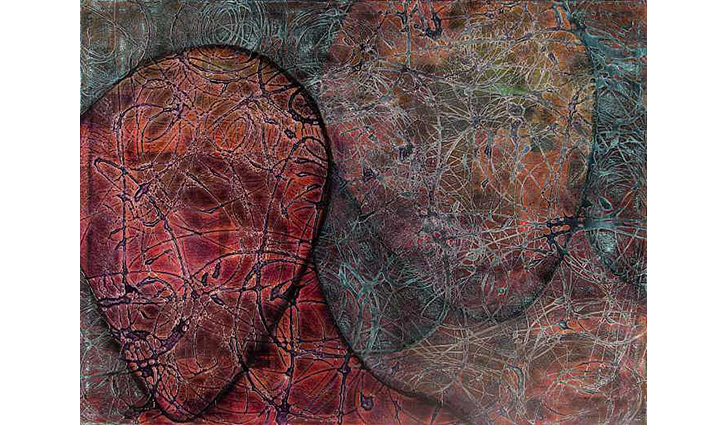Reading List
Ashby, R. and P. Lee. “Children's Concepts of Empathy and Understanding in History." In The History Curriculum for Teachers, edited by Christopher Portal, 62–88. London: Falmer, 1987.
Batson, C. Daniel. “These Things Called Empathy: Eight Related but Distinct Phenomena.” In The Social Neuroscience of Empathy, edited by Jean Decety and William Ickes, 3–15. Cambridge, MA: MIT Press, 2009.
Bråten, Stein. On Being Moved from Mirror Neurons to Empathy. Amsterdam: John Benjamins Publishing Company, 2007.
Burns, Charles. P. E. “Teaching and Self-Formation: Why the Ignoble ‘Intro to World Religions’ Really Matters.” Teaching Theology & Religion 4, no. 1 (2001): 15–22.
Buturian, Linda. The Changing Story: Digital Stories that Participate in Transforming Teaching and Learning. Minneapolis: University of Minnesota Libraries Publishing, 2016. Available open access at https://open.umn.edu/opentextbooks/textbooks/267.
Davis, Mark H. “Measuring Individual Differences in Empathy: Evidence for a Multidimensional Approach.” Journal of Personality and Social Psychology 44, no. 1 (1983): 113–126.
Cadwell, Katherine. “Transforming the Classroom.” Accessed January 3, 2020. https://www.katherinecadwell.com/transforming-the-classroom.
Decety, Jean, and William Ickes, eds. The Social Neuroscience of Empathy. Cambridge, MA: MIT Press, 2009.
Hartman, Saidiya V. Scenes of Subjection: Terror, Slavery, and Self-Making in Nineteenth-Century America. New York: Oxford University Press, 1997.
Hartman, Saidiya V., and Frank B. Wilderson, III. “The Position of the Unthought.” Qui Parle 13, no. 2 (2003): 183–201. https://doi.org/10.1215/quiparle.13.2.183
Hess, Mary E. "Exploring the Epistemological Challenges Underlying Civic Engagement by Religious Communities." The Good Society 26, nos. 2–3 (2017): 305-322. https://www.muse.jhu.edu/article/702186.
James, Alison, and Stephen D. Brookfield. Engaging Imagination: Helping Students Become Creative and Reflective Thinkers. San Francisco, CA: Jossey Bass, 2014.
Jensen, Sally. “Empathy and Imagination in Education for Sustainability.” Canadian Journal of Environmental Education 21 (2016): 89–105. Available at https://eric.ed.gov/?id=EJ1151868.
Konrath, Sara H., Edward H. O’Brien, and Courtney Hsing. “Changes in Dispositional Empathy in American College Students Over Time: A Meta-Analysis.” Personality and Social Psychology Review 15, no. 2 (May 2011): 180–98. https://doi.org/10.1177/1088868310377395.
Lanzoni, Susan. Empathy: A History. New Haven, CT: Yale University Press, 2018.
Matravers, Derek. Empathy. Malden, MA: Polity Press, 2017.
Pedwell, Carolyn. “De-Colonising Empathy: Thinking Affect Transnationally.” Samyukta: A Journal of Women’s Studies 16, no. 1 (2016): 27–49. Available online from the author, https://www.academia.edu/25905125/Decolonising_empathy_Thinking_affect_transnationally.
Porter, Adam L. “Role-Playing and Religion: Using Games to Educate Millennials.” Teaching Theology & Religion 11, no. 4 (September 2008): 230–235. https://doi.org/10.1111/j.1467-9647.2008.00468.x.
Schumann, Karina, Jamil Zaki, and Carol S. Dweck. “Addressing the Empathy Deficit: Beliefs about the Malleability of Empathy Predict Effortful Responses When Empathy Is Challenging.” Journal of Personality & Social Psychology 107, no. 3 (2014): 475–493. https://doi.org/10.1037/a0036738.
Stein, Edith. On the Problem of Empathy. Translated by Waltraut Stein. Washington, DC: ICS Publications, 1989.
Trothen, Tracy J. “Engaging the Borders: Empathy, Religious Studies, and Pre-Professional Fields.” Teaching Theology & Religion 19, no. 3 (July 2016): 245–263. https://doi.org/10.1111/teth.12336.
Wilderson, Frank B., III. “ ‘Raw Life’ and the Ruse of Empathy.” In Performance, Politics and Activism, edited by Peter Lichtenfels and John Rouse, 181–206. New York: Palgrave MacMillan, 2013.

